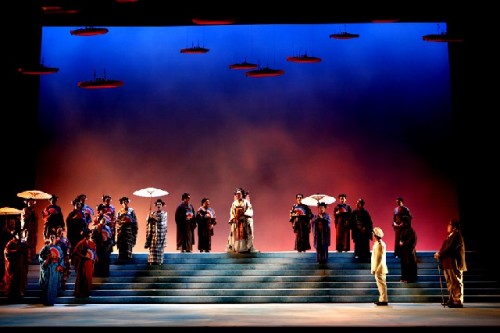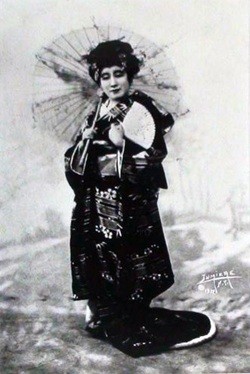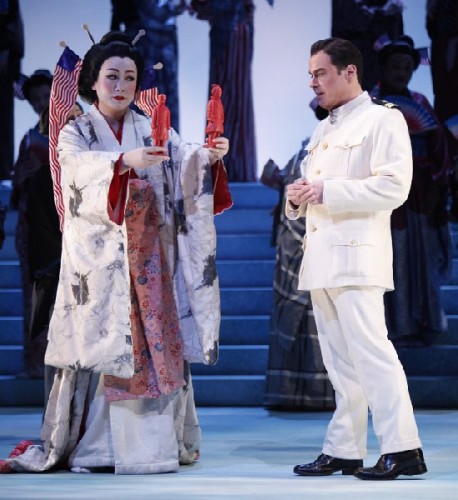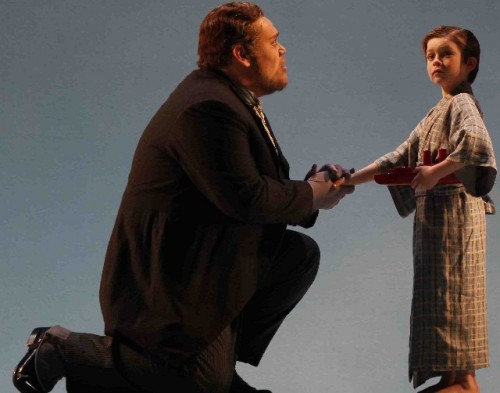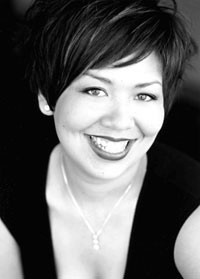New York City Opera's Madam Butterfly
Stunning Production by Mark Lamos
By: Susan Hall - Mar 22, 2010
Madama Butterfly
By Giacomo Puccini
Conducted by Steven Mosteller
Production by Mark Lamos
Sets by Michael Yeargan
Stage Direction David Grabarkewitz
Cast: Shu-Ying Li (Cio-Cio-San), Steven Harrison (Pinkerton).
Quinn Kelsey (Sharpless), Nina Yoshida Nelsen (Suzuki).
The New York City Opera
David Koch Theater, Lincoln Center
March 19 and repeated through April 18.
Disabuse yourself of the notion that you've heard enough of what critics in the beginning called 'a little weeper," Madama Butterfly. It's hard to imagine this music of heart-wrenching beauty panned on its opening night at La Scala. "Old hat," some in the audience said. "The composer has resorted to quoting himself. I hear Manon and Boheme."
Sipping from what he called a bitter cup, Puccini complained about despicable, heartless, unfeeling, "cowards, pigsÂ…" and the cruel Milanese audience and the critics who were dogs. He swore to God and the angels that he cared more about Butterfly than about his earlier works and that he had poured sincere emotion into it.
He received a telegram of condolence from the poet Pascoli:
Fly, fly little butterfly
You who wept from your heart
And made your bard weep.
Sing, sing little butterfly
You call out your dreams,
And with your little voiceÂ…
Puccini had worked hard to capture the Orientalism popular throughout the West. The score finally settled in 11 years after its first performance and has been an enormously popular staple of opera production ever since.
Through Mark Lamos, and the New York City Opera, we have a fresh, searing revival of this beloved opera.
The sets are simple but evocative; two sliding screens in the front and back of the stage, with steps between, used sometimes for entrances and exits, and at others, for performance. Monetary restrictions often inspire creative and satisfying artistic innovations.
Lighting is used to suggest changing moods and the passage of time. Figures are silhouetted through the screens so that we are subtly aware of their presence even before they are acknowledged on the main stage..
An arresting red is used unexpectedly in Butterfly's dress and all over the stage as appropriate. A red disc, suggesting the sun, echoes the red disc at the center of the Japanese national flag. Red in Japan is associated with both good and evil. The bright red toy ship, shaped in the image of the battleship of Lt. Pinkerton , is his son Sorrow's favorite plaything. Copies of its image hang from the ceiling in the first act, like solid origamis or mobiles. Red is the color of blood. This is one of the many effective touches in the set by Michael Yeargan.
Shu-Ying Li was a moving Cio-Cio-San, combining a robust soprano with nuanced lyricism. In her performance, and that of the rest of the cast, the superb stage direction of David Grabarkewitz shone. Recently, the conductor Riccardo Muti discussed the composer's concept when there is an interlude before the arrival of a character. The composer did not intend the character to enter at the end of the interlude in a rush. Instead, the music is written so the singer can move to it. Grabarkewitz is acutely aware of this marriage of musical beat and movement and his take on the ceremony adds immeasurably to the pleasure of the evening.
Small details form the mosaic that pulls the delicate, but consistent character of Cio-Cio-San together. She is a trusting 15 year old ex-geisha who believes for years that the cad Pinkerton will return.
Tamaki Miura, the first Asian to be cast as Cio-Cio-San, performed the role over 2000 times. Shu-Ying Li should get to do at least as many productions for her radiant soprano and spot on acting.
There were two debuts of note. Quinn Kelsey as Sharpless is an exciting baritone with a solid, lovely sense of line and character. This is the most challenging role he's undertaken in New York and he was more than up to the task. Nina Yoshida Nelsen sang Suzuki with a lush mezzo. Her voice is large, but completely comfortable in its expanding tessitura.
The Pinkerton role was a problem from the start. He's such a bastard. Steven Harrison has a pleasant tenor, but the role as written, despite the beautiful love duet in the first act, starts with him as a cad and arcs into a wimp. He can't face Cio-Cio-San directly and tell her that he is taking their son to America. Unfortunately, Puccini never wrote a third act aria for Pinkerton, making it clear that he loves Cio-Cio-San more than anything in the world. He must marry an American or his mother will kill herself, leaving the suicide to Cio-Cio-San. Would a different approach have helped? Who knows. It's all so politically incorrect.
Verdi said that the audience is always right. The rapturous reception Madama Butterfly received at Lincoln Center tells all you need to know. Be sure to enjoy this New York City Opera production.

